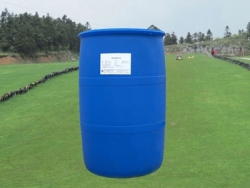Biological degradation surfactants is a method that is more studied at present, and has been adopted by some sewage treatment plants. This method can be roughly divided into the active sludge method, anaerobic digestion method, and the method of self -purification of the soil. They all use microorganisms to use the characteristics of the surfactant as the only carbon source to complete the surface active agent to complete the surface active agent. degradation.

Studies have found that many bacteria of fake singles, including grooves, pseudo -bacteria genus, peacock tail bacteria genus, De Akunha fake monolithium, membrane pseudolytic bacteria The genus of the genus, Cross Weisuli, and the genus Craber, the genus of colorless bacteria, the genus Knight, and the microbacteria, etc., can degrade the surfactant, but for the high concentration of surfactant wastewater, The degradation activity of these bacteria will be limited to a certain degree.
The treatment of the surface active agent wastewater must remove a large number of surfactants in the wastewater, but also consider reducing the COD and BOD of wastewater. Different types of surfactant wastewater should adopt different treatment methods. At present, there are mainly the following treatment techniques for surfactants wastewater at home and abroad:
The membrane separation method refers to the use of the high permeability of the membrane to separate the solvents and solvents in the solution. Frequently application membrane separation technology has reverse osmosis, ultrafiltration, micro filter, electrodiacreteness, and niche filtering. Among them, ultrafiltration membrane and nanofractive membrane have a good treatment effect on surface active wastewater. The membrane separation method is high and the energy consumption is small, but the membrane is easy to pollute, it is difficult to clean, and the operating cost is high.
Wang Jin used three different materials of polypropylene, polypropylene, and polycase to treat sewage sewage. It was found that polypropylene membranes were better, which can effectively remove pollutants such as turbidity, suspension, and fat in water. The surfactant of the ion ionic ion has no adverse effect on the whiteness of clothing for long -term circulation.
After the shawl waste water filter through the micro-flocked fiber-ultrafiltration combination process processing, the COD, turbidity, and LAS of the original water are reduced, and the process process is simple, the area is small, and the operation is simple. Simple materialization treatment method.
The key to membrane separation is to find high -efficiency and high -permeability membranes and increase the amount of treatment, and solve the problem of membrane pollution. In recent years, the sewage treatment technology of membrane biological reactor has developed rapidly. It is a new type of technology that combines the membrane components in the membrane separation technology and the biological reactor in the sewage biological treatment engineering. stage. This technology integrates the advantages of membrane separation and biological treatment technology. It is a very promising processing technology in wastewater reincarnation.